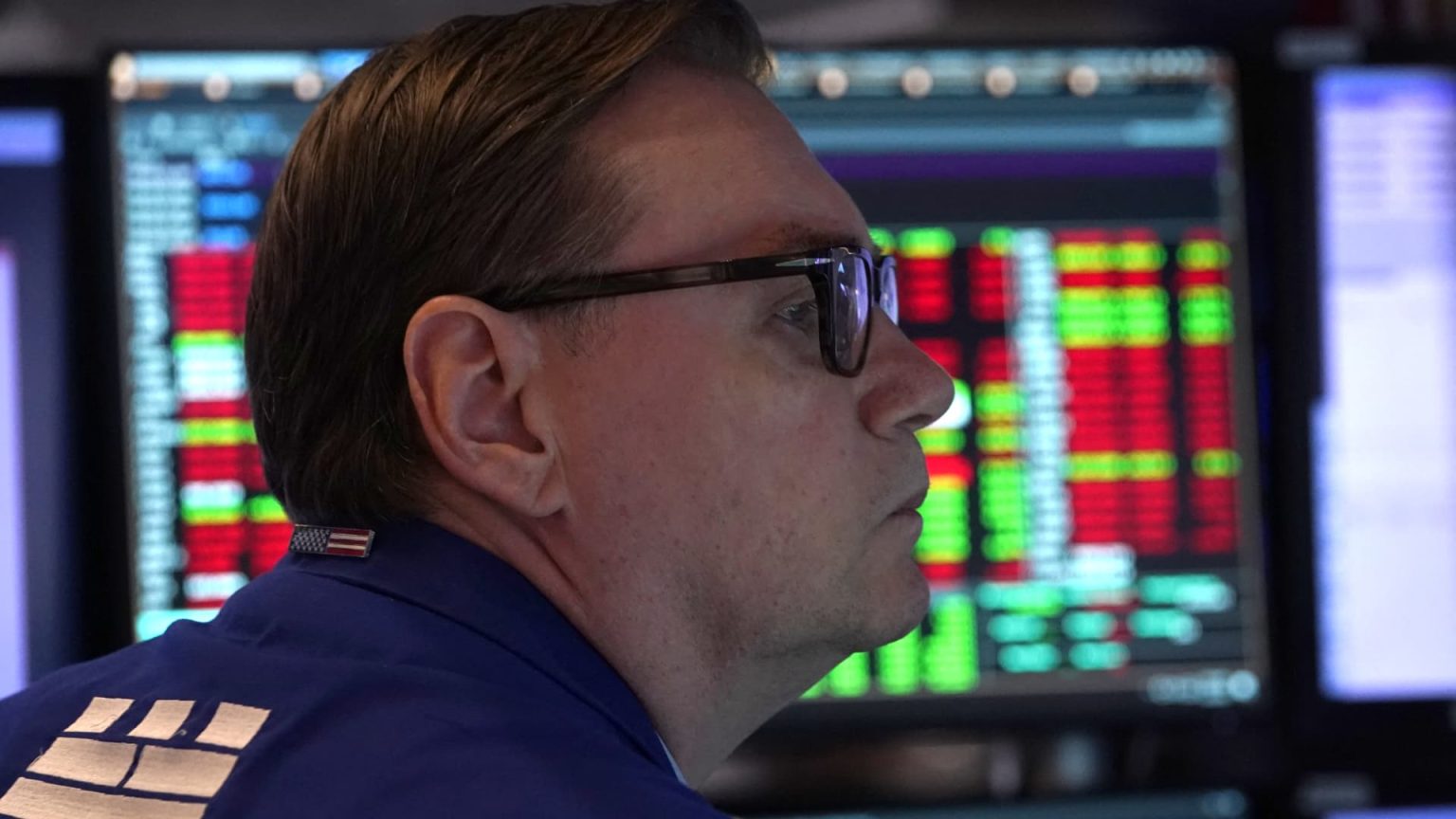On Tuesday, a selloff in the market was anticipated due to the period of strength that preceded it. While the exact timing is always unpredictable, the CNBC Investing Club had prepared by raising cash and building up a sizable cash position to take advantage of the market action. The upcoming earnings season, set to begin in a little over a week, may also be contributing to the selloff as investors raise cash to capitalize on potential dislocations that often occur during this time. However, the primary factor driving the selloff appears to be interest rates, with expectations of a June rate cut by the Federal Reserve decreasing from 26% a month ago to just over 40% as of Monday. This expectation of higher rates for a longer period has led to a correction in equity prices and increased bond yields, putting pressure on stocks.
The significant increase in the S&P 500 of over 27% since late October 2023 has raised concerns about the sustainability of such high annualized returns. Some market pullback after a period of strength is not only expected but also healthy for the market. Jim Cramer mentioned in a video that the CNBC Investing Club is “watching and waiting,” identifying stocks like Best Buy, Abbott Laboratories, and Palo Alto Networks as potential targets for investment as they near buy levels. The question now remains as to when to take advantage of the market selloff. It is important to note that this selloff is driven by rate expectations rather than negative economic data, indicating that the fundamentals of companies have not drastically changed. Leveraging the earnings scorecard’s Great or Good sections can help in identifying promising investment opportunities with fundamentally strong companies experiencing a decline in stock prices.
When considering when to make investment decisions during a market-wide selloff, it is essential to prioritize valuation and technical analysis. Monitoring earnings estimates and buying at valuations that align with historical averages or valuations since late 2021 can provide a margin of safety. Using technical analysis tools like the 50-day and 200-day moving averages, relative strength indicators, and market-level metrics such as the S&P 500 Short Range Oscillator and the down/up volume ratio on the NYSE can help in identifying entry points. By combining these technical indicators with fundamental stock views and economic considerations, investors can make more informed decisions and ensure that each buy counts.
During a market selloff, it is crucial to exercise patience and avoid making impulsive statement buys. Setting buy levels in advance and waiting for stocks to come to those levels can help in making more rational investment decisions. Additionally, declining volumes and signs of selling pressure alleviating can be good indicators of when to enter a position during a selloff. As the market conditions fluctuate and indicators shift, investors should stay vigilant and adapt their strategies accordingly. CNBC Investing Club subscribers receive trade alerts before Jim Cramer executes a trade in his charitable trust’s portfolio, allowing them to stay informed and potentially capitalize on investment opportunities in a volatile market.
In conclusion, the recent selloff in the market was anticipated by the CNBC Investing Club amid a period of strengthening in equity prices. The Club’s proactive approach of raising cash and monitoring key indicators like interest rates and earnings expectations has positioned them to take advantage of investment opportunities arising from the market dislocation. By combining fundamental analysis with technical tools and market-level metrics, investors can navigate a market-wide selloff more effectively and make informed decisions to optimize their investment strategies.


